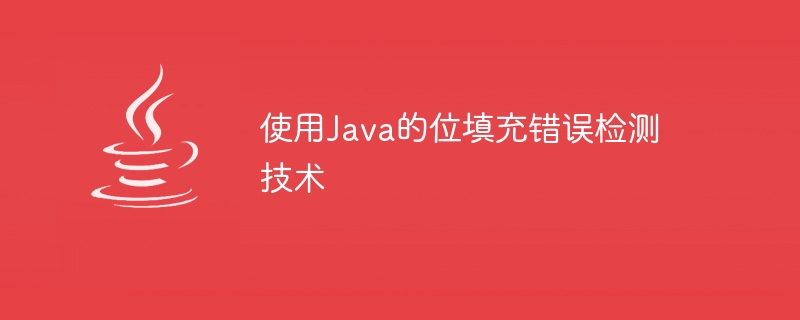
位填充是数据通信系统中使用的一种技术,用于检测和纠正数据传输过程中可能发生的错误。它的工作原理是向正在传输的数据添加额外的位,以便在发生错误时进行标记。
在Java中实现位填充的一种常见方法是使用标志字节(如0x7E)来指示一帧的开始和结束,并使用特殊的转义字节(如0x7D)来指示下一帧byte 是一个填充位。例如,发送方会在发送的数据中每次出现标志字节之前添加一个填充位,这样标志字节就不会在接收方被误认为是帧的开始或结束。
这是一个如何在 Java 中实现位填充的示例 -
public static byte[] bitStuff(byte[] data) { final byte FLAG = 0x7E; final byte ESCAPE = 0x7D; // Create a new byte array to store the stuffed data byte[] stuffedData = new byte[data.length * 2]; // Keep track of the current index in the stuffed data array int stuffedIndex = 0; // Iterate through the original data for (int i = 0; i < data.length; i++) { byte b = data[i]; // If the current byte is the flag or escape byte, stuff it if (b == FLAG || b == ESCAPE) { stuffedData[stuffedIndex++] = ESCAPE; stuffedData[stuffedIndex++] = (byte) (b ^ 0x20); } else { stuffedData[stuffedIndex++] = b; } } return stuffedData; }
在接收端,您可以使用类似的概念来检索原始数据。
public static byte[] bitUnStuff(byte[] data) { final byte FLAG = 0x7E; final byte ESCAPE = 0x7D; // Create a new byte array to store the unstuffed data byte[] unstuffedData = new byte[data.length]; // Keep track of the current index in the unstuffed data array int unstuffedIndex = 0; // Iterate through the stuffed data for (int i = 0; i < data.length; i++) { byte b = data[i]; // If the current byte is the escape byte, unstuff the next byte if (b == ESCAPE) { unstuffedData[unstuffedIndex++] = (byte) (data[++i] ^ 0x20); } else { unstuffedData[unstuffedIndex++] = b; } } return unstuffedData; }
这是位填充技术的基本示例,可以对其进行增强以处理更多错误情况并使用 CRC 或校验和验证数据。
public static void main(String[] args) { byte[] data = {0x48, 0x65, 0x6C, 0x6C, 0x6F, 0x7E}; // Hello~ byte[] stuffedData = bitStuff(data); System.out.println("Original Data: "+Arrays.toString(data)); System.out.println("Stuffed Data: "+ Arrays.toString(stuffedData)); byte[] unstuffedData = bitUnStuff(stuffedData); System.out.println("Unstuffed Data: "+ Arrays.toString(unstuffedData)); }
当你运行这个程序时,它会首先调用bitStuff()方法来填充原始数据,然后打印出原始数据和填充后的数据。
Then it will call the bitUnStuff() method to retrieve the original data, then it will print the unstuffed data.
对于给定的数据示例
0x48, 0x65, 0x6C, 0x6C, 0x6F, 0x7E,
您将得到输出
< p>Original Data: [72, 101, 108, 108, 111, 126] Stuffed Data: [72, 101, 108, 108, 111, 93, 30, 126] Unstuffed Data: [72, 101, 108, 108, 111, 126]
可以看到填充数据多了一个字节93, 30,这是7E的填充版本。
您还可以看到未填充的数据与原始数据相同,这确认数据已成功检索,没有任何错误。
以上是使用Java的位填充错误检测技术的详细内容。更多信息请关注PHP中文网其他相关文章!
